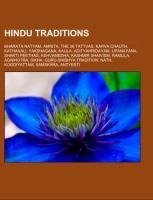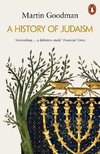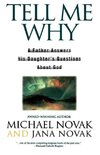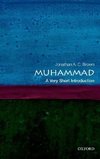
Hindu traditions
Source: Wikipedia. Pages: 159. Chapters: Bharata Natyam, Amrita, The 36 tattvas, Karva Chauth, Kathakali, Yakshagana, Kaula, Adityahridayam, Upanayana, Shakti Peethas, Ashvamedha, Kashmir Shaivism, Ramlila, Agnihotra, Sikha, Guru-shishya tradition, Nath,... Viac o knihe
Produkt je dočasne nedostupný
30.45 €
bežná cena: 34.60 €
O knihe
Source: Wikipedia. Pages: 159. Chapters: Bharata Natyam, Amrita, The 36 tattvas, Karva Chauth, Kathakali, Yakshagana, Kaula, Adityahridayam, Upanayana, Shakti Peethas, Ashvamedha, Kashmir Shaivism, Ramlila, Agnihotra, Sikha, Guru-shishya tradition, Nath, Koodiyattam, Sa¿skara, Antyesti, Pumsavana Simantonayana, Havanam, Svatantrya, Shaktipat, Upakarma, Aarti, Thidambu Nritham, Smitha Madhav, Terukkuttu, Animal sacrifice in Hinduism, Lakshmi Puja, Rasa lila, Chaturmas, Srauta, Sindoor, Kalakkaththu Kunchan Nambiar, Homa, Navnath, Japa, Satyanarayan Puja, Theeyaattam, Sandhyavandanam, Vrata, Tulsi Vivah, Hindu genealogy registers at Haridwar, Harikatha, Agnicayana, Purushamedha, Initiation in Hinduism, Andhra Kshatriya Customs, Prakasa, Trika, Abhisheka, Kumkum, Kirtan, Tilak, Dasara Elephants, Diet In Hinduism, Gaudiya Nritya, A¿¿a, Adinath Sampradaya, Pravachan, Chakyar koothu, Diksha, Achamana, Prasad, Ottamthullal, Panchamrita, Bhog, Unnayi Variyar, Karana dance, Niyoga, Ramanattam, Gandharva marriage, Siddhanta, Bratabandha, Koothambalam, Manbhatt, Kumbhabhishekham, Vivaah, Sraddha, Karnavedha, Prana pratishta, Swayamvara, Rasam Pagri, Pongala, Kalampattu, Simantonnayana, Villu Paatu, Sarpa Kavu, Chudakarana, Tehravin, Padayani, Ram Barat, Annaprashana, Vidyara¿bha¿, Panchayatana puja, Mahasamadhi, Naman, Jagran, Vedic rituals after death, Oath of the Hindu physician, Dhuni, Besan mehndi, Dakshina, Alarippu, Worship in Hinduism, Shanmata, Abhivadaye, Garbhadhana, Krishnanattam, Sashtiaapdapoorthi, Pradosha vrata, Nishkramana, Keshanta, Nangiar Kuthu, Vishalakshi, Sri Vaikanasam, Namakarana, Sahasra purna chandrodayam, Pujari, Samavartanam, Nishekam, Nivedhanam, Mayilattam, Vattakkali, Jatakarma, Jaya Parvati vrat, Temple dance, Pushpanjali, Satya Pir, Sadhabhisekam, Ekapatnivrata, Naveekarana Kalasam, Karmkand, Pind Sammelan, Praishartha, Viraja Homa, Akshara abyasam, Khirapat, Choodakarma, Wanvun, Yenne Saastra, Ritushuddhi, Biruda. Excerpt: In Kasmir Saivism, the 36 tattvas describe the Absolute, its internal aspects and the creation including living beings, down to the physical reality. The addition of 11 supplemental tattvas compared to the allows for a richer, fuller vision of the Absolute. Going from siva to we find the process of manifestation, the creation of the universe; going the opposite way we find the process of spiritual evolution culminating with the dissolution in Siva. Tattvas divide into three groups: Ashuddha, or impure (material, sensorial, the organs of action, the mind and the ego), Shuddhashuddha, or pure-impure (the soul and its limitations) and Shudda, or pure (internal aspects of the Absolute). The impure tattvas are the domain of objectivity and duality, the pure-impure tattvas are the domain of knowledge and the pure tattvas are the domain of transcendental unity and non-differentiation. The five mahabhutas are the ingredients of the physical world. They represent the final point of manifestation, where light (Prakasa) is condensed into matter, yet, at the same time, the mahabhutas remain identical with Siva. is produced by gandha tattva (medium for olfactory sensations). It is also the abode of , the energy that resides in potentiality at the base of the spinal column. is identical to Para Sakti when it emerges and rises to the top chakra. According to the material world is created by Prakasa (spiritual light, uncreated light). Kasmir Saivism describes the reflection of the top principle (Siva tattva) ri...
- Vydavateľstvo: Books LLC, Reference Series
- Formát: Paperback
- Jazyk:
- ISBN: 9781156951200


 Anglický jazyk
Anglický jazyk 









